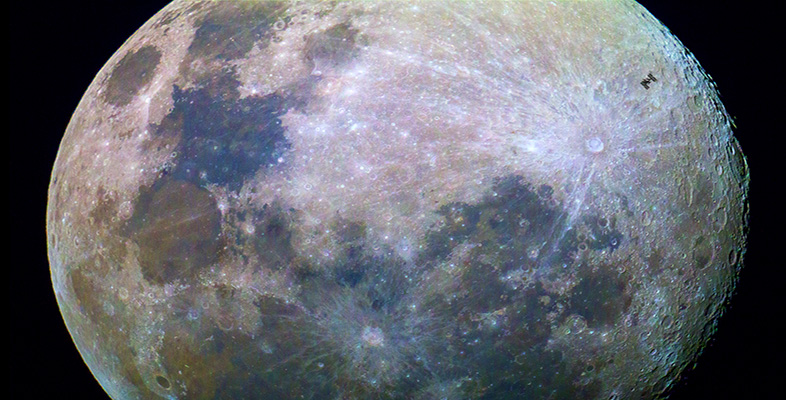2.2 Rotation and orbit
David A. Rothery Teach Yourself Planets, Chapter 6, pp. 66-75, Hodder Education, 2000, 2003.
Copyright © David Rothery
The Moon is a familiar object in our sky, because it is our nearest neighbour and the only natural object to orbit the Earth. As described in Chapter 02, this situation is thought to have arisen as the result of a giant impact, 4.5 billion years ago. Something that adds to the Moon's familiarity is that it always presents the same face towards us. This is because the Moon rotates exactly once per orbit, which is described as synchronous rotation. This is a phenomenon also exhibited by most of the satellites of the giant planets, and is brought about because tidal forces between the planet and its satellite slow the satellite's rotation until it matches its orbital period.
Although the Moon rotates once per orbit, with patience it is possible to see about 59 per cent of its surface from the Earth. One reason is that the Moon's proximity is such that the Earth's rotation results in slight but significantly different points of view from a single site across a 12-hour period. A similar change in perspective could be gained by moving from the north pole to the south pole. The other reason is that although the Moon rotates at an exactly constant rate, its progress round its orbit varies slightly in accordance with Kepler's second law of planetary motion (Chapter 02). However, the terrain near the edge of the lunar disc is never well displayed, because we only ever see it obliquely, and there remains 41 per cent of the lunar surface that can never be seen from the Earth.
